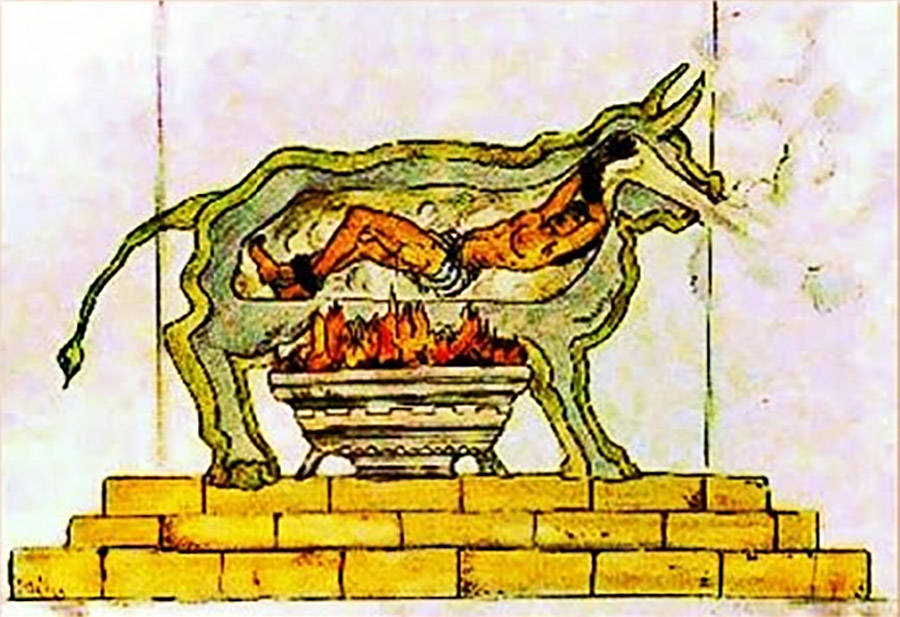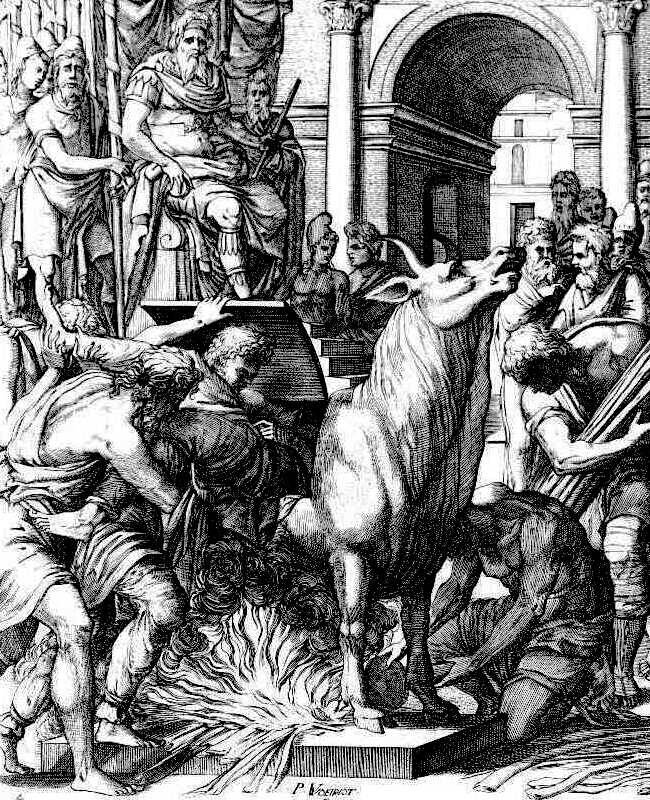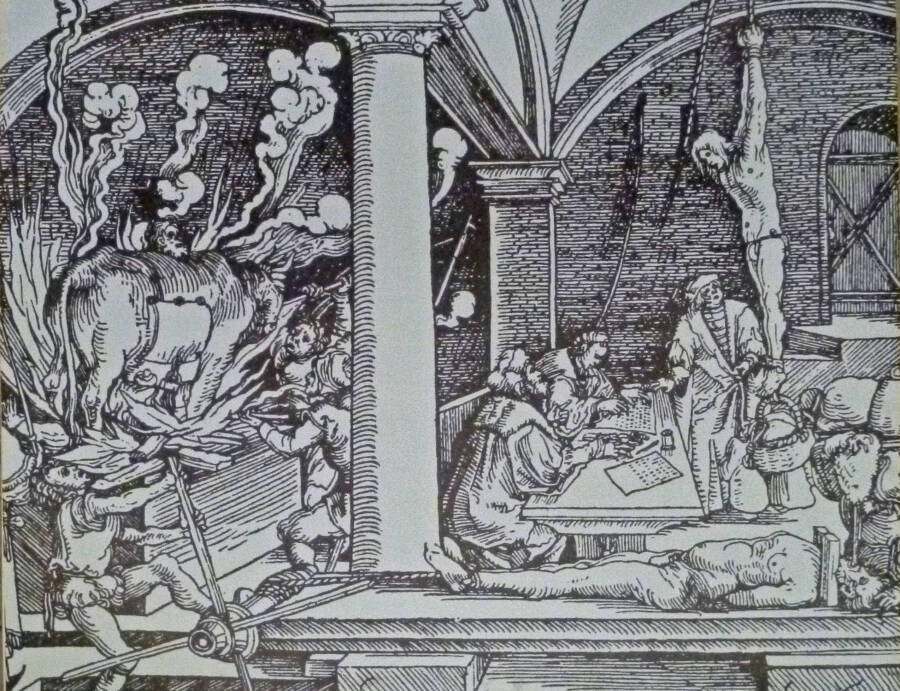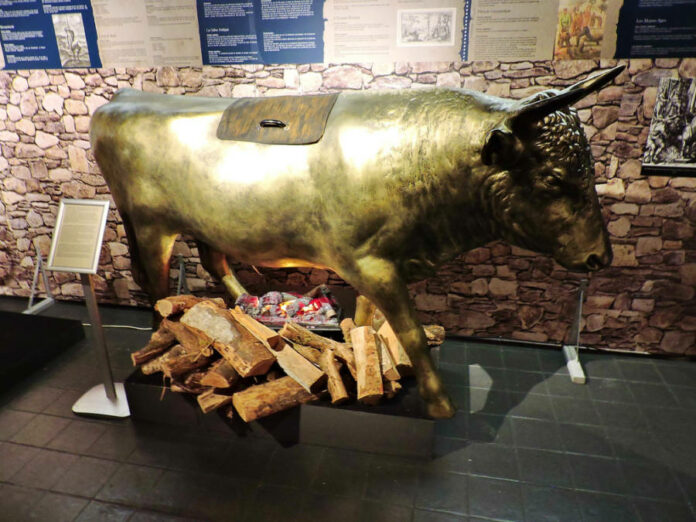Constructed from brass, iron, or bronze, the Brazen Bull torture device of ancient Greece was reportedly used to roast victims to death, turning their screams into the sound of a bull. Known as the Bronze Bull as well, it was an infamous torture and execution device allegedly utilized in ancient Greece. Created in the 6th century B.C.E., it was intended to be a particularly horrific method of capital punishment. The device was a hollow brass statue shaped like a real bull, where victims were placed before a fire was lit underneath. The metal would become intensely hot, leading to a painful death for the person inside.

To intensify the torment, the Brazen Bull was specifically designed to amplify the victim’s screams, making them sound like the deep bellowing of a bull due to its acoustic apparatus.
The invention of the Brazen Bull is attributed to Phalaris and Perilaus. Like many ancient torture devices, it’s challenging to verify if the Brazen Bull was ever actually used. However, ancient records mention its existence and the legend of its creation. When victims were placed inside, their screams were supposedly transformed by the device into the sound of a bull.

The story goes that around 560 B.C.E. in the seaside colony of Akragas (modern-day Sicily), there was a tyrannical ruler named Phalaris. Phalaris’ realm was prosperous and beautiful, but he ruled with an iron fist. Perilaus, the court sculptor, proposed the Brazen Bull to Phalaris as a method to execute condemned prisoners and provide a deterrent spectacle for the populace. It was essentially a melodic torture device.

Perilaus’ statue was a brass cast of a bull, hollow inside, with a door on one side through which a victim could be placed. Once the door was sealed, a fire would be lit underneath. The metal would then heat up, causing a slow and agonizing death. The device was engineered to convert the victim’s screams into sounds similar to the bellowing of a bull, thanks to a complex system of tubes and stops. Perilaus intended this execution method to serve as both punishment and a warning, amplifying the psychological terror of the execution by transforming the screams into a bullish yell.

However, according to the story, Phalaris, upon hearing the proposal and seeing the bull, was horrified not by its cruelty but by Perilaus’ inventiveness. To test the device, Phalaris ordered Perilaus to enter the bull and demonstrate the sound mechanism. Once Perilaus was inside, Phalaris ordered a fire to be lit beneath the bull, subjecting Perilaus to the very torture he had devised. Some accounts state that before Perilaus could die from the heat, Phalaris had him removed and then executed in a less inventive manner. But like many ancient stories, the truth about the Brazen Bull is hard to verify.
Famed poet and philosopher Cicero referenced the Brazen Bull as a fact and a symbol of Phalaris’ cruelty in his speeches “In Verrum.” Cicero described the bull as a cruel instrument used for punishment. Fellow historian Diodorus Siculus wrote that Perilaus suggested to Phalaris that the bull’s design would make the victim’s groanings sound like a bellowing bull, providing pleasure to the ruler as they emerged from the pipes in the nostrils. Diodorus’ Phalaris had Perilaus demonstrate this and then burned him to death for his loathsome invention.

Mentions of the Brazen Bull appeared in the works of other ancient writers such as Pindar and Lucretius, adding some historical credence to its existence. These accounts describe the Brazen Bull being used in public executions, but modern historians have cast doubt on the story. The legend of the Brazen Bull’s creation contains elements of classical myths and legends, such as poetic justice, lessons about hubris, and irony. The story of Perilaus becoming the bull’s first victim is a classic example of irony, leading many to consider it an allegory or embellishment of Phalaris’ cruelty.
Moreover, there has never been any archaeological evidence of the Brazen Bull’s existence in ancient Greece, nor is it depicted in ancient art. However, a lack of physical evidence does not necessarily disprove its existence — it simply means that no physical evidence can confirm it.
Whether an evil tyrant or a vigilante leader, Phalaris and his Brazen Bull remain a story for the ages.




